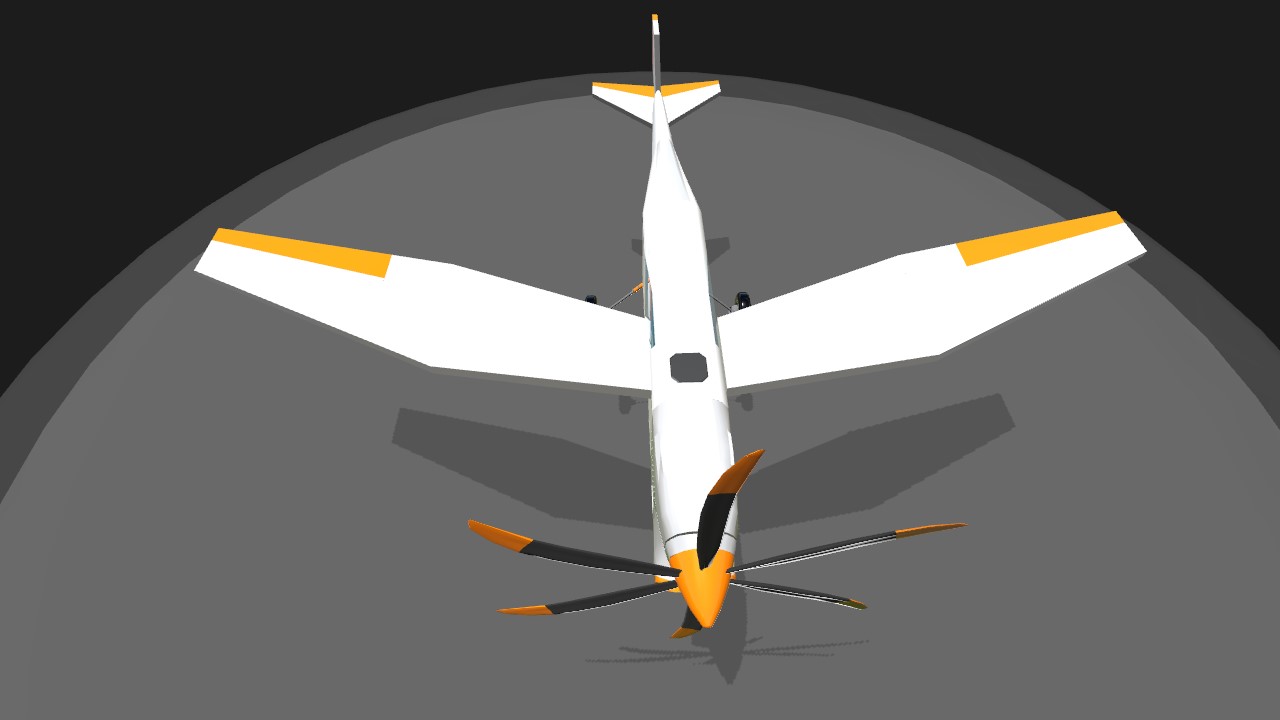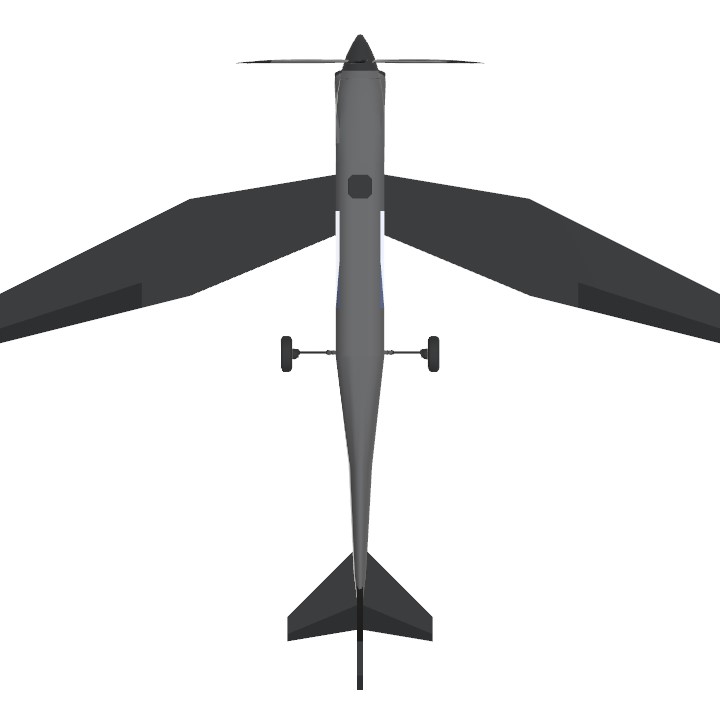Turboprop experimental record-setting aircraft.
The RED-7 Arrbeetoo is an experimental aircraft designed to set a new record for fastest propeller powered airplane*. The design is inspired by the Wright-Dayton RB-1 Racer. The aircraft has cramped, reclined pilot accommodation. Forward view would be provided by a camera (F6) and screen (if I was sophisticated enough to create such a thing).
Like many experimental aircraft, it is tricky to land and take off. The slightest sideways motion will cause a wing to drop with catastrophic consequences. In the air, it is a rocket and accelerates out to 677 mph. Pitch control is a little twitchy and it's nose heavy, but can be trimmed to fly straight and level easily enough. Roll control is a little too snappy, but in general, once in the air it is a nice flying aircraft. For takeoffs, use only 12% power and slight backpressure. For landings, keep it as straight as possible for as long as you can. Steering on the ground before you've slowed down, will result in an accident.
Designer's Notes:
Any idea how to put the view from a camera on a button or label? It's beyond me, but it sure would be cool to get it set up that way!
This aircraft has my first custom landing gear, and I had trouble with landing gear doors, so I just have them retracting through the fuselage. Any tips would be appreciated! Next custom gear, I'll build on this and see whether I can improve on that!
Regarding drag, how does SimplePlanes calculate drag? I first designed the airplane gearless and it flew out to 600+ mph. When I first set up the landing gear top speed was limited to mid 500 mph. My theory is that it calculates overall drag based on the landing gear being extended, and then even when the gear is retracted uses that same drag. As a result, I used Overload to turn off drag on the landing gear components, and the excellent performance returned. This is the only tinkering with drag that I did.
- There is a lot of confusion around what aircraft is the current record holder for fastest propeller powered aircraft. To hold the record, the attempt must be properly timed by officials and many of the contenders never made such a record attempt. The Piaggio P-180 is the official FAI record holder with a speed of 576.3 mph.
Other contenders are the Russian Tu-95 and Tu-114, which, although they were used operationally, never made a record attempt. Reputedly, the Tu-95 could reach 606 mph an hour in level flight.
There were also several aircraft designed to achieve higher speeds, but these were never demonstrated to achieve these design speeds. Amongst these, there was the Republic XF-84H Thunderscreech that was designed to reach 623 mph, and the Convair XFY that was designed to reach 610 mph. The maximum speed attained by the XF-84 is reported to be 520 mph.
The reality is that it is just not sensible to design an aircraft with a propeller to operate at these speeds, when a jet just does it so much better. Any airplane that could break this record would not have any practical value other than beating the record.
Specifications
General Characteristics
- Created On Windows
- Wingspan 24.3ft (7.4m)
- Length 22.1ft (6.7m)
- Height 9.8ft (3.0m)
- Empty Weight 2,992lbs (1,357kg)
- Loaded Weight 3,381lbs (1,534kg)
Performance
- Horse Power/Weight Ratio 0.887
- Wing Loading 47.2lbs/ft2 (230.5kg/m2)
- Wing Area 71.6ft2 (6.7m2)
- Drag Points 1022
Parts
- Number of Parts 48
- Control Surfaces 5
- Performance Cost 333





